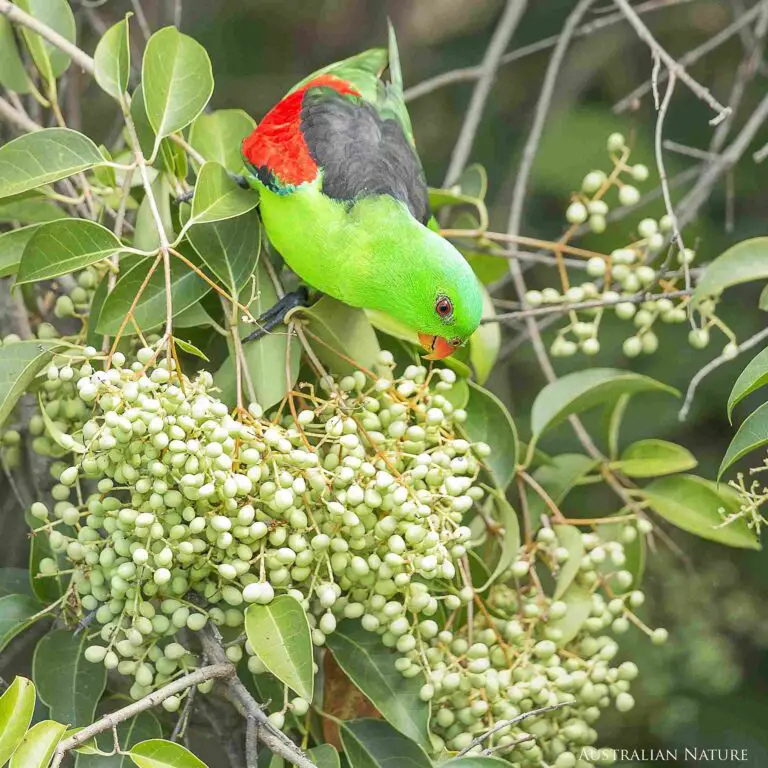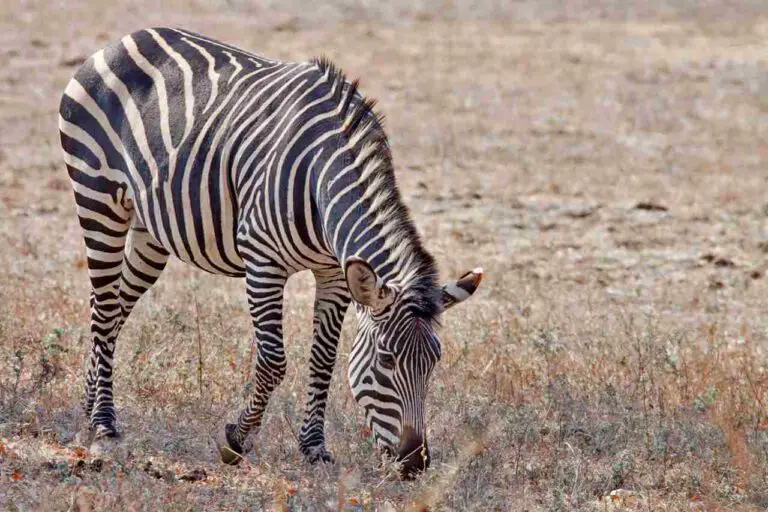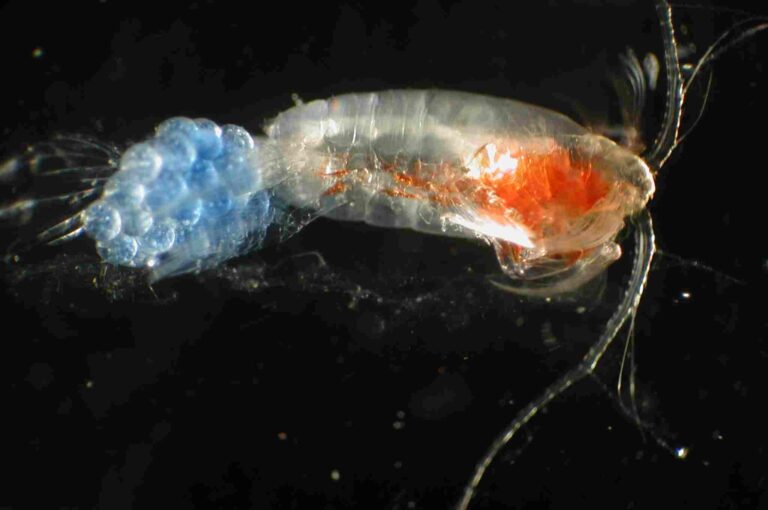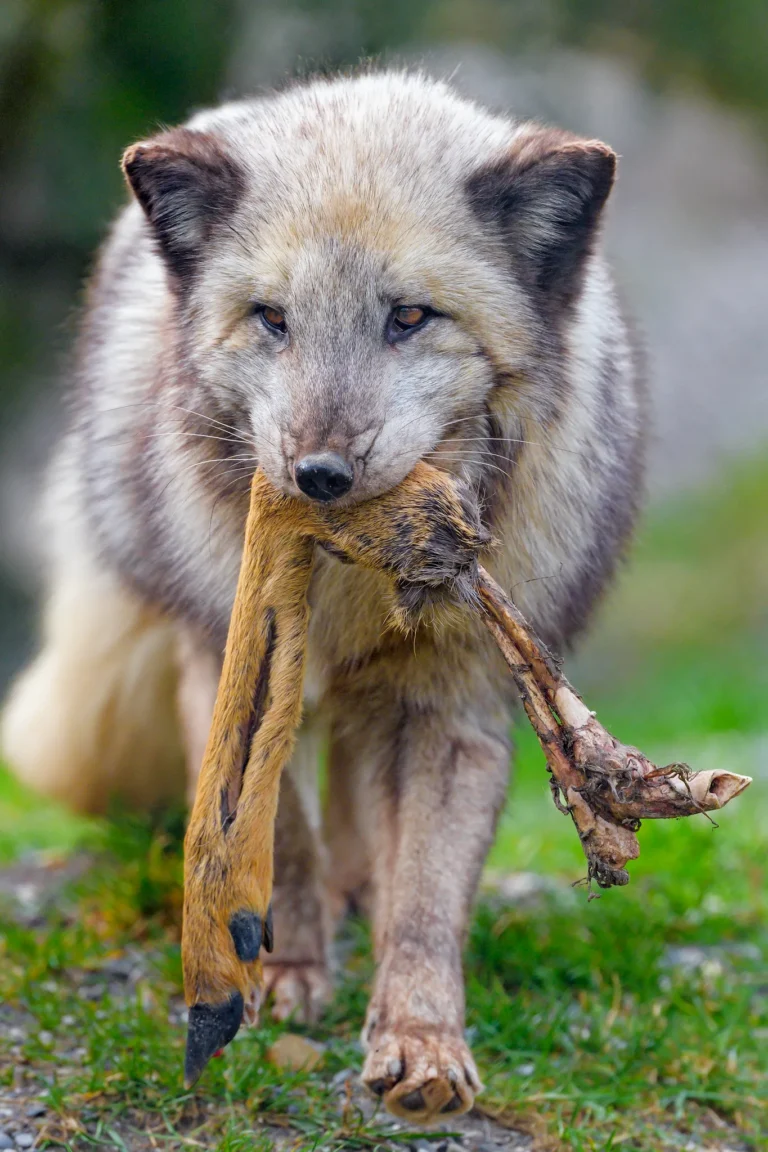Is a Butterfly a Consumer? Trophic Position and Role of Butterflies Discussed
Yes a butterfly is a primary consumer because it does not produce its own food or decompose organic matter, but rather derives nutrition mainly from plant products like nectar in flowers.
Is a Butterfly a Producer?
A butterfly is not a producer because it does not manufacture its own food or biomass. Unlike plants, which use photosynthesis to produce their own energy, butterflies rely on external sources of nutrition.
They obtain their sustenance mainly from plant products, such as nectar from flowers. This makes them primary consumers in the food chain. By consuming plant material, butterflies play a role in pollination and the dispersal of plant seeds. However, they do not possess the ability to produce their own food, which is a defining characteristic of producers in an ecosystem.
Reasons Why Butterflies are Not Producers
1. They Do Not Manufacture Their Own Food
Butterflies are heterotrophic organisms, meaning they do not manufacture their own food. Unlike plants, which are able to produce their own energy through photosynthesis, butterflies rely on external sources for their nutrition.
To survive, butterflies feed on nectar from flowers, which provides them with the necessary sugars and carbohydrates for energy. They have specialized mouthparts called proboscis that allow them to extract nectar from the flowers. Additionally, some species of butterflies also feed on other sources such as fruit juices, tree sap, or even animal dung.
Butterflies also require other nutrients such as proteins, vitamins, and minerals for their growth and development. They obtain these essential nutrients by consuming other organic matter, such as pollen, rotting fruits, or even animal carcasses. This makes them important contributors to the process of nutrient cycling in ecosystems.
While butterflies do not manufacture their own food, they play a crucial role as pollinators. As they feed on nectar, they inadvertently transfer pollen from one flower to another, facilitating the fertilization and reproduction of plants. This mutualistic relationship between butterflies and plants is essential for the survival and diversity of both organisms.
2. Producers are Food Sources for Butterflies
Butterflies are consumers, not producers, because they rely on external sources for their nutrition. Unlike plants, which are able to produce their own food through photosynthesis, butterflies do not have the ability to manufacture their own energy. Instead, they obtain their nourishment from various food sources in their environment.
One of the primary food sources for butterflies is nectar from flowers. Butterflies have specialized mouthparts called proboscis that allow them to extract the sugary nectar from the flowers. This nectar provides them with the necessary sugars and carbohydrates for energy. Additionally, some species of butterflies also feed on other sources such as fruit juices, tree sap, or even animal dung.
In addition to nectar, butterflies require other nutrients such as proteins, vitamins, and minerals for their growth and development. They obtain these essential nutrients by consuming other organic matter. For example, butterflies may feed on pollen, which is a rich source of proteins. They may also feed on rotting fruits or even animal carcasses to obtain the necessary nutrients.
By consuming these various food sources, butterflies play a role in nutrient cycling and energy transfer within ecosystems.
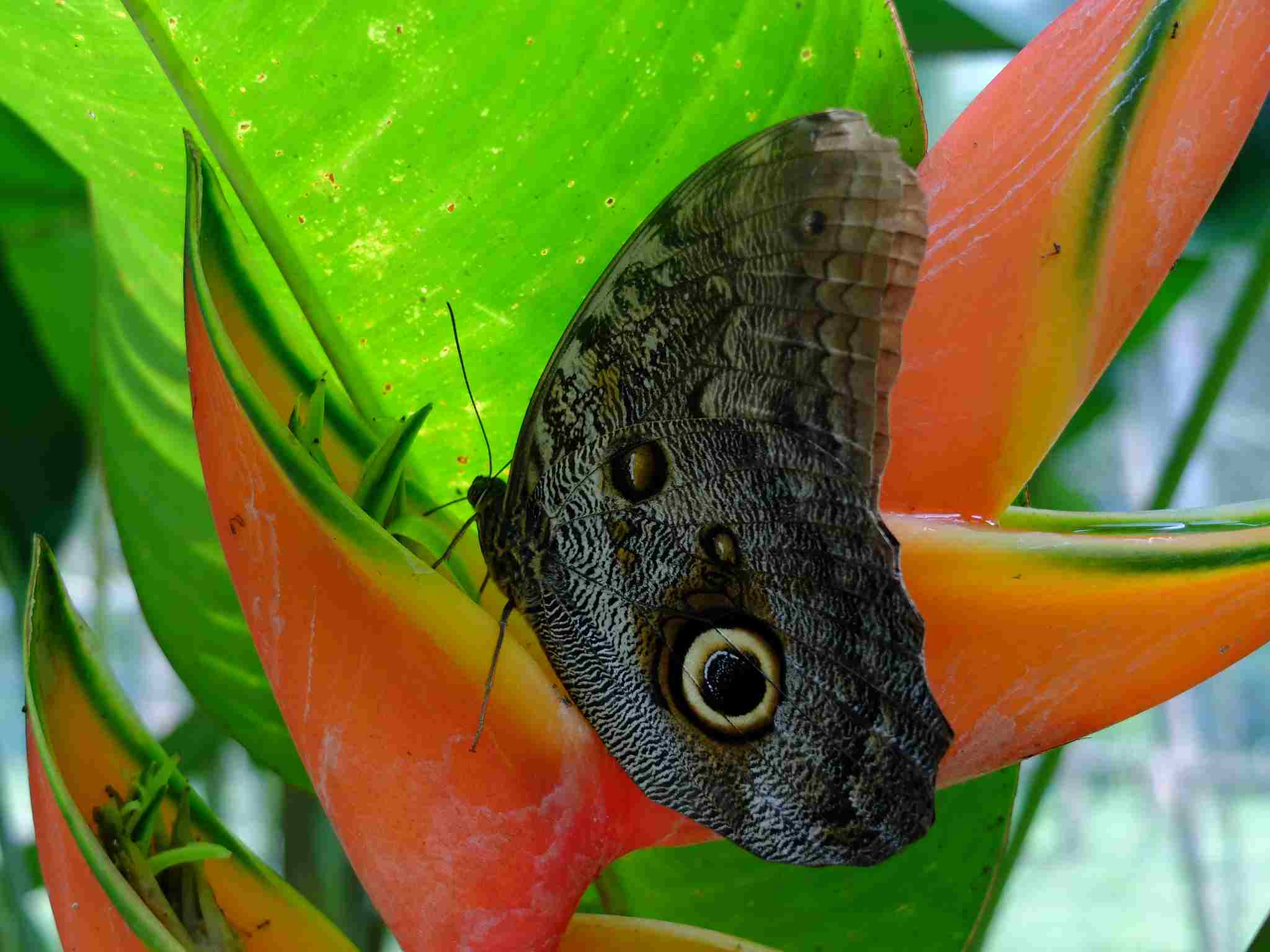
3. Butterflies Lack the Physiological Adaptations of Producers
Butterflies lack the physiological adaptations of producers, which further supports their classification as consumers. Unlike plants, butterflies do not possess leaves, stems, roots, aerenchyma, or flagella. These structures are essential for plants to carry out photosynthesis and produce their own food.
Leaves, for example, contain chloroplasts that capture sunlight and convert it into energy through photosynthesis. Stems provide support and transport water and nutrients throughout the plant. Roots anchor the plant in the ground and absorb water and minerals from the soil. Aerenchyma, a specialized tissue found in some aquatic plants, allows for efficient gas exchange. Flagella are whip-like structures found in some algae that help with movement.
Without these adaptations, butterflies are unable to produce their own energy through photosynthesis or carry out other essential functions that plants perform. Instead, they rely on external food sources for their nutrition. This reliance on external sources further emphasizes their role as consumers in the food chain.
What Type of Consumer is a Butterfly?
Butterflies are classified as herbivorous consumers, also known as primary consumers. This means that their main food sources are plants. Butterflies primarily feed on nectar, which is a sweet liquid produced by flowers. They use their long, tubular mouthparts called proboscis to extract the nectar from the flowers. In addition to nectar, butterflies may also consume other plant-based food sources such as pollen, sap, and fruit juices.
As herbivorous consumers, butterflies play a crucial role in the ecosystem. They act as pollinators, transferring pollen from one flower to another as they feed on nectar. This process helps in the reproduction of plants and ensures the continuation of plant species. Butterflies are attracted to brightly colored flowers with a strong fragrance, which makes them effective pollinators for a wide variety of plant species.
The classification of butterflies as primary consumers is based on several factors. Firstly, their diet consists mainly of plant material, which distinguishes them from other types of consumers. Unlike secondary or tertiary consumers that feed on other animals, butterflies rely on plants for their nutrition. This plant-based diet is a key characteristic of primary consumers.
Another reason why butterflies are classified as primary consumers is their relative size and biological complexity. Butterflies are relatively small organisms with a simple digestive system. They lack the predatory characteristics and specialized adaptations of secondary or tertiary consumers, such as sharp teeth or claws for capturing and killing prey. Instead, their mouthparts are adapted for sipping nectar from flowers, further supporting their classification as primary consumers.
The scale of trophic impact is another factor that classifies butterflies as primary consumers. While they may not have a significant impact on individual plants, the collective feeding activities of butterflies can have a substantial effect on plant populations. By visiting multiple flowers and transferring pollen, butterflies contribute to the overall health and diversity of plant communities.
It is important to note that butterflies themselves fall prey to secondary consumers, such as some species of birds, bats, and spiders. This further reinforces their position as primary consumers in the food chain. While butterflies may be consumed by higher-level consumers, they primarily obtain their energy and nutrients from plants.
Are Butterflies Primary Consumers?
Butterflies are indeed classified as primary consumers due to their plant-based diet. Their main source of food is nectar, which they obtain by using their long, tubular mouthparts called proboscis to extract the sweet liquid from flowers. In addition to nectar, butterflies may also consume other plant-based food sources such as pollen, sap, and fruit juices. This diet distinguishes them from other types of consumers that feed on other animals.
The classification of butterflies as primary consumers is supported by their relative size and biological complexity. Butterflies are relatively small organisms with a simple digestive system, lacking the predatory characteristics and specialized adaptations of secondary or tertiary consumers. Their mouthparts are specifically adapted for sipping nectar from flowers, further reinforcing their classification as primary consumers.
Why Butterflies are Classified as Primary Consumers
1. Relative Size and Biological Complexity
Butterflies are classified as primary consumers due to their relative size and biological complexity. Compared to secondary consumers, butterflies are smaller and biologically simpler. This distinction implies that butterflies occupy a lower trophic level and primarily consume producers, such as plants.
In terms of size, butterflies are generally smaller than secondary consumers, such as birds or mammals. Their small size limits their ability to consume larger prey or exert significant trophic impact. Instead, butterflies rely on consuming plant material, such as nectar or leaves, which are characteristic of primary consumers.
Biologically, butterflies lack the physiological adaptations and predatory characteristics commonly found in secondary consumers. They do not possess sharp teeth or claws for capturing and killing prey. Instead, butterflies have specialized mouthparts, such as a proboscis, which allows them to extract nectar from flowers. This adaptation is more suited for consuming plant-based resources, further supporting their classification as primary consumers.
2. Scale of Trophic Impact
The scale of trophic impact is another factor that supports the classification of butterflies as primary consumers. Butterflies, being relatively small in size and feeding capacity, do not cause notable cascading effects on the ecosystem. This characteristic aligns with the role of primary consumers, which typically have a lower trophic impact compared to secondary consumers.
Due to their small size, butterflies have limited capacity to consume large quantities of prey. They primarily feed on plant material, such as nectar or leaves, which are abundant and easily accessible. While they may have a significant impact on individual plants, their overall effect on the ecosystem is relatively small.
In an ecosystem, the trophic levels are interconnected, with each level depending on the one below it. Primary consumers, like butterflies, consume producers, such as plants, and serve as a link between the energy captured by plants and the rest of the food web. Their consumption of plant material helps to transfer energy and nutrients from the primary producers to higher trophic levels.
However, the scale of trophic impact of butterflies is not as pronounced as that of secondary consumers. Secondary consumers, such as frogs or lizards, have a greater ability to consume larger prey and exert a more significant influence on the ecosystem. They can control the population of primary consumers, including butterflies, through predation.
3. Butterflies Fall Prey to Secondary Consumers
Butterflies are not exempt from being preyed upon by secondary consumers such as frogs and lizards. This vulnerability to predation further supports the classification of butterflies as primary consumers in the food chain.
In simpler terms, butterflies are considered primary consumers because they can be eaten by other animals. Just like how we humans consume food, butterflies rely on consuming plant material, such as nectar or leaves, for their sustenance. This makes them an important link between the energy captured by plants and the rest of the food web.
Butterflies, with their vibrant colors and intricate patterns, may seem like they possess some sort of defense mechanism against predators. However, their lack of predatory characteristics and physical adaptations for hunting or self-defense make them more susceptible to being preyed upon by secondary consumers.
The classification of butterflies as primary consumers is not solely based on their vulnerability to predation. Other factors, such as their herbivorous diet and the relative size and biological complexity, also contribute to this classification.
4. Herbivorous Diet
One of the key reasons why butterflies are classified as primary consumers is their herbivorous diet. Butterflies primarily feed on plant material, such as nectar from flowers or leaves from plants. This reliance on consuming producers for sustenance is a defining characteristic of primary consumers.
Butterflies, like many other herbivores, play a crucial role in the food chain by transferring energy from plants to higher trophic levels. As they feed on plants, they obtain nutrients and energy, which they use for their own growth and survival. In this way, butterflies act as a bridge between the energy captured by plants through photosynthesis and the rest of the food web.
Their herbivorous diet also influences their physical characteristics. Butterflies have specialized mouthparts, such as a proboscis, which allows them to extract nectar from flowers. This adaptation enables them to access the sugary reward provided by flowers, while also facilitating pollination as they move from one flower to another.
By consuming plant material, butterflies contribute to the dispersal of pollen and the fertilization of plants, making them important agents of plant reproduction. This mutualistic relationship between butterflies and plants further highlights their role as primary consumers in ecosystems.
5. Lack of Predatory Characteristics
Another reason why butterflies are classified as primary consumers is their lack of predatory characteristics. Unlike secondary or tertiary consumers, butterflies do not possess the physiological or behavioral adaptations necessary for hunting and capturing prey.
Physiologically, butterflies do not have the sharp teeth, claws, or powerful jaws that are commonly associated with predators. Their mouthparts are designed for sipping nectar from flowers, not for tearing apart flesh or capturing other animals. This physical limitation further supports their classification as primary consumers.
Behaviorally, butterflies do not exhibit the hunting behaviors typically seen in predators. They do not actively pursue or stalk their food sources. Instead, they rely on finding and accessing plant material, such as flowers or leaves, which they consume for sustenance. This passive feeding behavior aligns with the characteristics of primary consumers.
The lack of predatory characteristics in butterflies reinforces their role as primary consumers in the food chain. They depend on plants as their primary source of energy and nutrients, and they do not directly prey on other organisms. This distinction is important in understanding the trophic position and ecological role of butterflies within ecosystems.
By focusing on consuming producers and lacking the predatory adaptations of higher-level consumers, butterflies contribute to the flow of energy and nutrients from plants to other trophic levels. Their herbivorous diet and absence of predatory characteristics make them an integral part of the primary consumer community in ecological systems.
Are Butterflies Decomposers?
While butterflies play an important role as primary consumers in ecosystems, they are not classified as decomposers. Decomposers are organisms that directly contribute to the process of biodegradation by breaking down organic matter into simpler forms. Butterflies, on the other hand, do not have a direct role in this process.
During their larval stage, butterflies, also known as caterpillars, are herbivores. They primarily feed on plant material such as leaves. However, it is worth noting that caterpillars may occasionally act as scavengers and detritivores, consuming detrital plant matter. This behavior, though rare, allows them to indirectly contribute to the decomposition process.
In the context of decomposition, detritivores play a crucial role. Detritivores are organisms that consume dead organic material, such as fallen leaves or decaying plant matter. By consuming detritus, detritivores support the growth and activity of bacteria and fungi, which are the primary decomposers in ecosystems.
While butterflies may occasionally consume detrital plant matter during their larval stage, their primary diet consists of live plant material. This distinction sets them apart from true decomposers, as their feeding habits are not focused on breaking down dead organic matter.
Are Butterflies Omnivores?
When it comes to their dietary habits, butterflies are generally not considered omnivores. Instead, they are primarily herbivores, meaning they primarily feed on plant material. Butterflies do not typically consume animal matter as part of their diet.
Butterflies, in their adult stage, have a specialized feeding structure called a proboscis. This long, straw-like tube allows them to extract nectar from flowers. Nectar is a sugary liquid produced by flowers as a reward for pollinators like butterflies. By feeding on nectar, butterflies play a crucial role in pollination, aiding in the reproduction of flowering plants.
During their larval stage, butterflies are known as caterpillars. Caterpillars have a voracious appetite and primarily feed on leaves. They have specialized mouthparts called mandibles that allow them to chew and consume plant material. This herbivorous diet provides the necessary nutrients for their growth and development.
While butterflies are primarily herbivores, it is worth noting that there are some exceptions to this rule. Certain species of butterflies may occasionally exhibit omnivorous behavior. This means that they may consume both plant material and animal matter as part of their diet. However, these instances are relatively rare and not representative of the general dietary habits of butterflies as a whole.
The majority of butterfly species rely solely on plant material for their nutritional needs. They have evolved to specialize in feeding on specific types of plants, often referred to as host plants. These host plants provide the necessary nutrients and chemical compounds that caterpillars require for their growth and survival.
By focusing on a herbivorous diet, butterflies play a vital role in maintaining the balance of ecosystems. They act as primary consumers, converting plant material into energy and nutrients. This energy is then transferred up the food chain, supporting the growth and survival of higher trophic levels.
FAQs
1. Are Caterpillars Omnivores?
Caterpillars are not generally omnivores. They primarily feed on plant material and are considered herbivores. Caterpillars have specialized mouthparts that allow them to chew and consume leaves, stems, and other parts of plants.
They rely on these plant sources for their nutrition and growth. While some caterpillars may accidentally ingest small insects or other non-plant material while feeding, it is not a significant part of their diet.
Caterpillars play an important role in the ecosystem as primary consumers, as they consume large amounts of plant material. Their feeding habits contribute to the balance of plant populations and provide a food source for other organisms, such as birds and other insects.
2. Are Butterflies Herbivores and Omnivores?
Butterflies are generally herbivores, not omnivores. They feed exclusively on plant material, such as nectar, pollen, and sap. Their mouthparts are specially adapted for sipping liquids, like a straw, making it easier for them to extract the sugary nectar from flowers.
Butterflies play a crucial role in pollination, as they transfer pollen from one flower to another while feeding. This helps in the reproduction of plants and the production of fruits and seeds.
While butterflies are not considered omnivores, there are some instances where they may accidentally consume small insects or other non-plant material. However, this is not a significant part of their diet and does not make them true omnivores.
Their preference for plant-based food sources makes butterflies important contributors to the ecosystem. By consuming plant material, they help control plant populations and provide a food source for other organisms, such as birds and insects.
3. Are Butterflies Omnivores or Carnivores
Butterflies are neither. omnivores nor carnivores. Instead, butterflies are actually herbivores, meaning they primarily feed on plant material.
Their diet consists mainly of nectar, pollen, and sap from flowers and plants. With their specialized mouthparts, butterflies are able to sip liquids like a straw, making it easier for them to extract the sugary nectar from flowers. While there may be instances where butterflies accidentally consume small insects or non-plant material, this is not a significant part of their diet and does not classify them as omnivores. Butterflies play a crucial role in pollination, transferring pollen from one flower to another while feeding.
This helps in the reproduction of plants and the production of fruits and seeds.
4. Are Butterflies Carnivores?
Butterflies are primarily herbivores, feeding on plant material such as nectar, pollen, and sap. However, there are a few exceptions to this rule. Some butterflies, like those of the Feniseca genus, are considered obligate carnivores. This means that they rely solely on consuming animal prey for their survival.
While most butterflies are herbivores, these carnivorous butterflies have a very specific diet. For example, the Feniseca tarquinis, also known as “the Harvester,” feeds exclusively on the wooly alder aphid. This narrow range of prey sets them apart from other butterflies.
It’s important to note that these carnivorous butterflies are the exception rather than the norm. The vast majority of butterfly species are herbivores, playing a crucial role in pollination and the reproduction of plants. Their feeding habits contribute to the production of fruits and seeds, making them essential for the ecosystem.
5. What Do Carnivorous Butterflies Eat?
Carnivorous butterflies have a very specific diet, usually consisting of a narrow range of prey. One example is the Feniseca tarquinis, also known as “the Harvester,” which exclusively feeds on the wooly alder aphid. These butterflies are unique in their feeding habits, as they rely solely on consuming animal prey for their survival.
The wooly alder aphid serves as the primary source of nutrition for the Harvester butterfly. This specific prey item provides the necessary nutrients and energy for the butterfly’s growth and development.
It’s important to note that these carnivorous butterflies are the exception rather than the norm among butterfly species. The vast majority of butterflies are herbivores, feeding on plant material such as nectar, pollen, and sap.
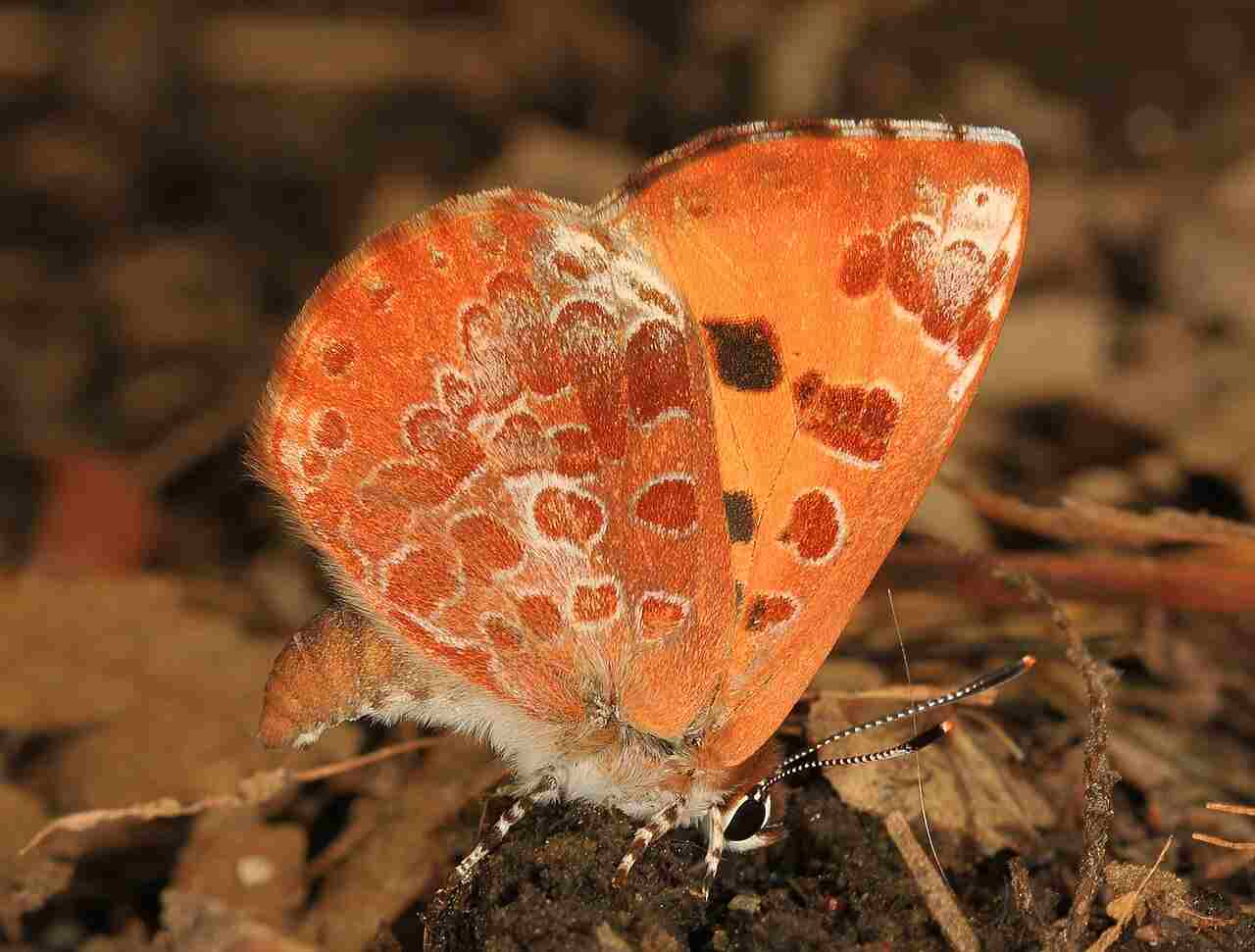
6. Are Caterpillars Herbivores Carnivores or Omnivores?
Caterpillars are mostly herbivores, but they can also be carnivores. Their primary diet consists of plant material, such as leaves, flowers, and stems. This makes them herbivores, as they rely on plants for their source of nutrition. However, there are some caterpillar species that exhibit carnivorous tendencies. These caterpillars feed on other insects or even small animals.
While herbivory is the most common feeding habit among caterpillars, the occurrence of carnivorous caterpillars is relatively rare and not a general characteristic of the entire caterpillar population. It is important to note that the specific feeding habits of caterpillars can vary depending on the species and their environment. Some caterpillars may exhibit omnivorous tendencies, consuming both plant material and animal prey.
7. Is a Caterpillar an Omnivore or a Herbivore?
A caterpillar is primarily a herbivore, meaning it mainly consumes plant material for its nutrition. However, some caterpillar species may exhibit omnivorous tendencies, consuming both plant material and animal prey. While herbivory is the most common feeding habit among caterpillars, the occurrence of carnivorous caterpillars is relatively rare and not a general characteristic of the entire caterpillar population.
The specific feeding habits of caterpillars can vary depending on the species and their environment. It is important to note that even though caterpillars may occasionally consume animal prey, they are still considered herbivores due to their reliance on plants as their primary source of food. So, while a caterpillar may exhibit omnivorous tendencies, it is generally classified as a herbivore.
8. Are Caterpillars Herbivores or Carnivores?
Caterpillars are primarily herbivores, meaning they mainly consume plant matter for their nutrition. They have specialized mouthparts that allow them to chew and digest plant material efficiently. Caterpillars feed on various parts of plants, including leaves, stems, and flowers. Some species may also eat fruits or seeds.
Their diet consists solely of plant matter, making them an important part of the ecosystem as primary consumers. While there are some exceptions, such as certain species that exhibit omnivorous tendencies and consume small insects or other animal prey, herbivory is the general characteristic of caterpillars. Their feeding habits play a crucial role in the pollination of plants and the transfer of energy through the food chain. Overall, caterpillars are essential herbivores in maintaining the balance of ecosystems.
9. What Does the Caterpillar Eat?
Caterpillars have a diverse diet, but they primarily feed on foliage from living plants. Their main source of nutrition comes from consuming leaves, stems, and flowers. These plant parts provide the necessary nutrients and energy for the caterpillar’s growth and development. Some caterpillar species may also consume other plant parts, such as fruits or seeds, depending on their specific dietary preferences.
While caterpillars are primarily herbivores, there are rare instances where they may scavenge and feed on detritus. However, this behavior is not common and is not a significant part of their diet. Caterpillars are mainly focused on consuming fresh plant material to meet their nutritional needs.
Their feeding habits play a crucial role in the ecosystem as primary consumers. By consuming plant matter, caterpillars contribute to the pollination of plants and the transfer of energy through the food chain.
10. What Type of Animal is a Caterpillar?
A caterpillar is a herbivorous insect and the larval stage of a butterfly. It undergoes a remarkable transformation from a tiny egg to a crawling caterpillar before eventually becoming a beautiful butterfly.
During its larval stage, the caterpillar’s main focus is on feeding and growing. It has a voracious appetite and primarily consumes foliage from living plants. This makes it a herbivore, as it relies solely on plant material for its nutrition.
Caterpillars play a crucial role in the life cycle of butterflies. They serve as the primary consumers in the ecosystem, contributing to the pollination of plants and the transfer of energy through the food chain. Their feeding habits not only sustain their own growth but also support the survival and reproduction of future generations of butterflies.
As the caterpillar continues to eat and grow, it sheds its skin multiple times in a process called molting. Each molt reveals a larger and more developed caterpillar until it reaches its final larval stage. At this point, it forms a chrysalis or cocoon, where it undergoes metamorphosis and transforms into a butterfly.
11. Is a Butterfly a Consumer or Decomposer?
A butterfly is primarily a consumer in the ecosystem. It plays a vital role in pollination and the transfer of energy through the food chain. However, it is important to note that butterflies are neither saprophytic nor detritivorous, which are the characteristics of decomposers.
As a consumer, a butterfly feeds on various food sources, mainly nectar from flowers. This makes it an important pollinator, as it helps in the reproduction of plants by transferring pollen from one flower to another. Additionally, some butterflies also consume other plant products such as fruits and tree sap.
While butterflies do not breakdown organic matter like decomposers, they contribute to the overall balance of the ecosystem as consumers.
12. Which Type of Consumer is a Butterfly?
A butterfly is classified as a primary consumer in the ecosystem. It primarily feeds on plant products such as nectar, fruits, and tree sap. As a primary consumer, the butterfly plays a crucial role in the food chain by obtaining energy from plants.
Butterflies are important pollinators as they transfer pollen from one flower to another while feeding on nectar. This process aids in the reproduction of plants and contributes to the overall biodiversity of the ecosystem.
Being a primary consumer, butterflies rely on the energy stored in plants to survive and reproduce. They do not consume other animals or decompose organic matter like secondary consumers or decomposers. Instead, they obtain their nutrients directly from plants, making them an integral part of the herbivore category in the food chain.
13. Is a Caterpillar a Decomposer?
No, a caterpillar is not a decomposer. Caterpillars are primarily herbivores, feeding on plant leaves and stems. They do not play a role in breaking down organic matter or recycling nutrients like decomposers do. Instead, caterpillars serve as an important link in the food chain as primary consumers.
They consume plant material and convert it into energy, which is then passed on to higher trophic levels. Caterpillars play a vital role in the ecosystem by providing a food source for other organisms, such as birds and insects. Their feeding habits contribute to the overall balance and biodiversity of the ecosystem.
14. Are Butterflies Decomposers in The Ocean?
Butterflies are not decomposers, and they are not typically found in the ocean. Decomposers are organisms that break down dead organic matter, such as leaves and dead animals, and recycle nutrients back into the ecosystem.
Butterflies, on the other hand, are primarily herbivores and feed on nectar from flowers. They play a crucial role in pollination and are often found in terrestrial habitats like gardens, meadows, and forests. While there are some species of butterflies that live near bodies of water, they are not considered decomposers and do not inhabit the ocean.
15. Are Moths Decomposers?
Moths, like butterflies, are not decomposers. They do not play a role in breaking down dead organic matter and recycling nutrients back into the ecosystem. Moths, similar to butterflies, are primarily herbivores and feed on plant-derived biomass, such as nectar from flowers. They are often found in terrestrial habitats like gardens, meadows, and forests.
While moths and butterflies belong to the same order of insects, Lepidoptera, their specific feeding habits may vary. However, neither moths nor butterflies are considered decomposers. Instead, they contribute to pollination and the overall balance of ecosystems through their interactions with plants. So, moths are not involved in the decomposition process.
16. What Do Butterflies Eat?
Butterflies primarily feed on plant-derived biomass, such as nectar from flowers. Their diet consists mainly of nectar, which is a sugary liquid produced by flowers to attract pollinators. Nectar provides butterflies with the necessary energy and nutrients they need to survive. In addition to nectar, some butterfly species also feed on other plant parts, such as leaves, fruits, and sap.
However, the majority of their diet is focused on consuming nectar. This feeding behavior makes butterflies important pollinators, as they transfer pollen from one flower to another while feeding. By doing so, they contribute to the reproduction and survival of many plant species.
17. Is a Caterpillar a Primary Consumer?
A caterpillar is considered a primary consumer because it primarily feeds on plants. As a herbivore, its diet consists mainly of plant material such as leaves. Caterpillars play an important role in the food chain as they consume plant biomass, converting it into energy and nutrients for their growth and development.
By consuming plants, caterpillars help to regulate plant populations and contribute to the overall balance of ecosystems. Their feeding habits make them an essential part of the natural world, connecting the energy flow from plants to higher trophic levels.
18. Is a Butterfly a Secondary Consumer?
A butterfly is not typically considered a secondary consumer. While there are some carnivorous butterfly species, such as Feniseca tarquinis, most butterflies are primary consumers.
They primarily feed on nectar from flowers, making them herbivores. Butterflies play a crucial role in pollination and are an important part of the ecosystem. Their feeding habits contribute to the transfer of energy from plants to higher trophic levels. So, while there are exceptions, the majority of butterflies are not secondary consumers.
19. Is a Monarch Butterfly a Herbivore?
A monarch butterfly is an obligate herbivore that feeds exclusively on milkweeds. This means that it relies solely on plants for its nutrition and does not consume any other organisms.
The monarch butterfly’s diet consists of the nectar from flowers and the leaves of milkweed plants. By feeding on milkweeds, monarch butterflies obtain toxins called cardiac glycosides, which make them unpalatable to predators. This defense mechanism helps protect the monarch butterfly from being eaten. So, to answer the question, yes, a monarch butterfly is indeed a herbivore.
Conclusion
* In this article, we have explored the dietary habits of caterpillars and butterflies, focusing on whether they are herbivores, carnivores, or omnivores. We have learned that caterpillars are primarily herbivores, feeding on plants such as milkweed, while butterflies also rely on nectar from flowers for their nutrition.
* Additionally, we have discussed the role of butterflies as consumers in the ecosystem. They act as primary consumers when they feed on plants, and secondary consumers when they consume other organisms such as nectar. This highlights their importance in pollination and maintaining the balance of the ecosystem.
* Furthermore, we have examined the question of whether butterflies and caterpillars are decomposers. While they do not play a significant role in decomposition, they contribute to nutrient cycling through their waste products, which can be broken down by decomposers.
* Overall, it is clear that butterflies and caterpillars are essential consumers in the natural world, playing a vital role in pollination and nutrient cycling. Their dietary habits and ecological functions make them fascinating creatures to study and appreciate.
* In general, caterpillars and butterflies are primarily herbivores, relying on plants for their nutrition. They act as both primary and secondary consumers, contributing to the balance of the ecosystem. While they are not decomposers, they play a role in nutrient cycling.


